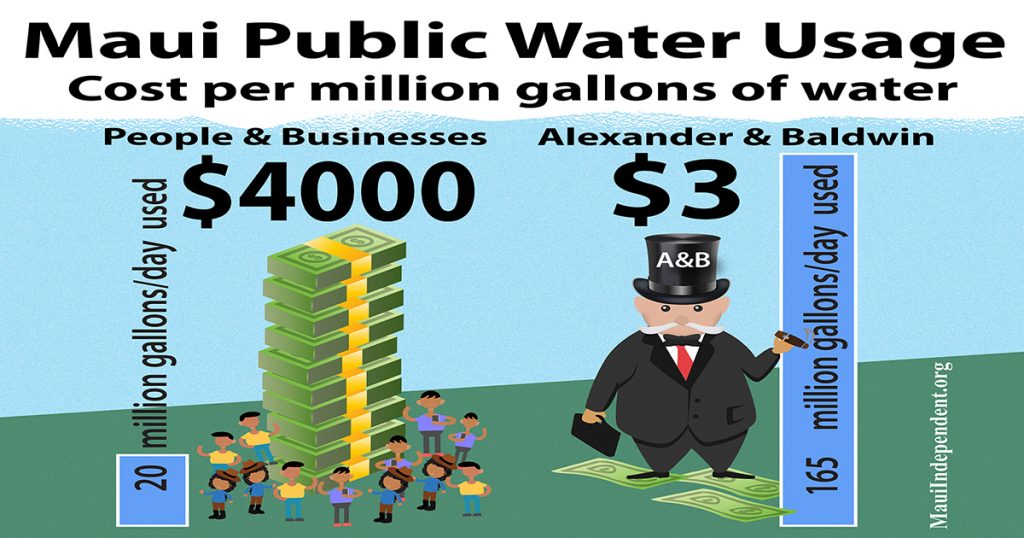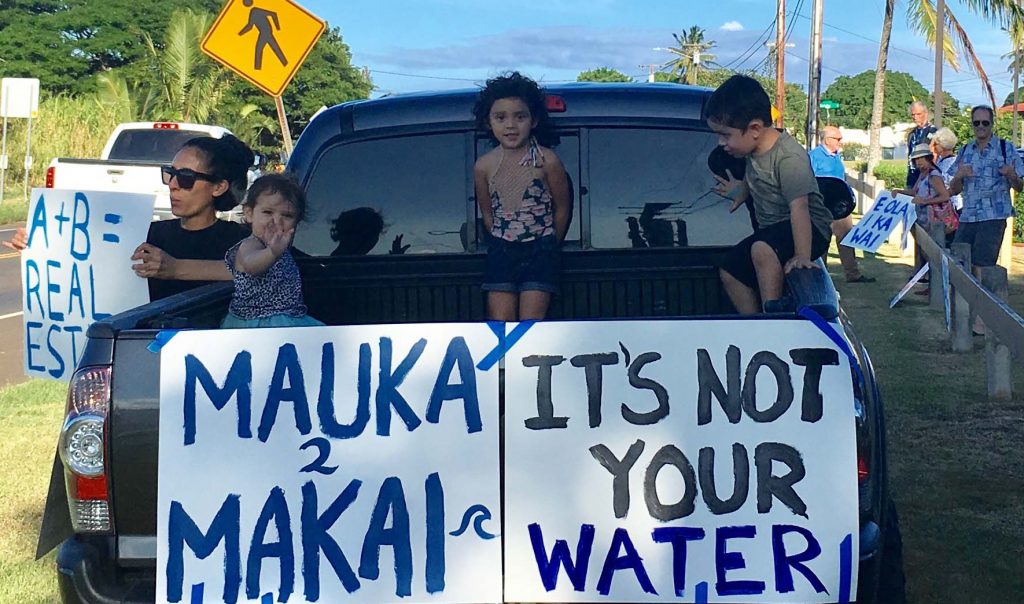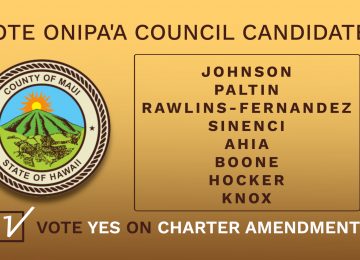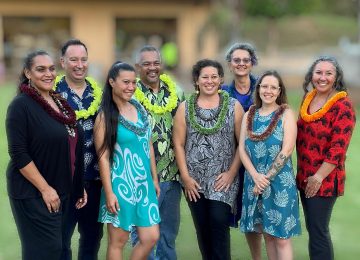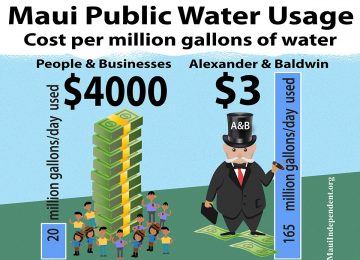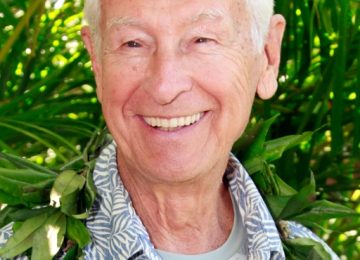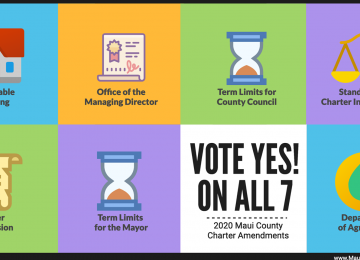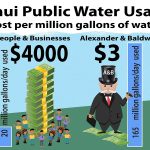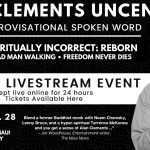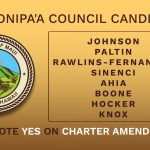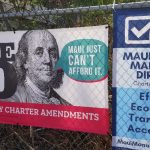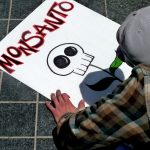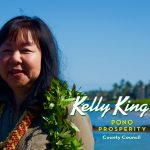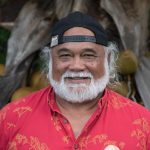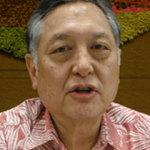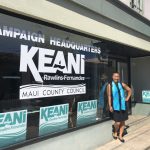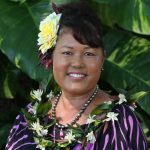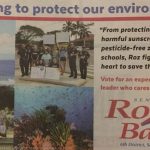The battle over Maui’s public water resources, a battle pitting the common interest of Native Hawaiians and ordinary citizens against Alexander & Baldwin, the state’s largest land development corporation, continues to be waged.
At an October 9 public hearing in Haiku, the crowd was standing-room-only as the State Commission on Water Resource Management heard final arguments on a petition to facilitate a 30-year continuation of a virtual giveaway of more than 80% of the island’s public waters for a price of less than 1% of the rate that Native Hawaiians and ordinary Maui citizens pay on the open market.
The State Commission will soon establish minimum flow standards for more than 20 streams diverted by Alexander & Baldwin (“A&B”) subsidiary East Maui Irrigation.
The contentious final arguments hearing set the stage for A&B to continue its shameful history of lies, evasions and distortions. For years, request after request to challenge the diversions by east Maui farmers and petitioners, Na Moku Aupuni o Ko‘olau Hui and Maui Tomorrow, have failed.
On January 6, 2016 A&B’s sugar subsidiary announced plans to close the vast sugar plantations on Maui. The contested case hearing provided a stage for A&B to announce that they had alternative agricultural plans that could benefit the island as a whole.
A&B’s January 2016 statement was delivered at a time of public concern for the 600 people who had just lost their jobs at HC&S. It was an unfortunate abuse of public sensitivities because since that time, A&B has never exhibited any substantive agricultural plans for the future of the largest and most important agricultural lands on Maui.
During a 2016 hearing, the Water Commission hearings question and answer period was riddled with irrelevant subject matter and evasiveness by A&B. At one point the audacity reached a new level of disbelief when A&B lawyer David Schulmeister suggested that perhaps taking measurements above the diversions of public water would be a wiser solution. The company’s attorneys gave up questioning Maui Tomorrow executive director Albert Perez after he smacked back every question with piercing accuracy.
To add insult to injury, A&B recently presented an agriculture plan that included growing GMO Bt corn which has been opposed by Maui County residents who passed a ballot initiative to end GMO’s island occupation. This ag plan announcement inspired over 80 testifiers to remain all day in Maui County Council chambers to passionately testify against A&Bʻs environmentally unsound actions.
Community activists opposed to a contination of A&B’s massive water theft met early for meetings and sign painting at the Haiku Community Center. The lead petitioning group, Na Moku Aupuni o Ko‘olau Hui had their entire membership present for the meeting. While public testimony was not permitted, provocative signs were held and displayed around the venue.
Signs reinforced the crucial importance of water allocation. They included: Kalo (taro) Not Condos, Justice For Kalo Farmers, Fish Need Water, Fake A&B Ag Plan, Mauka To Makai, Kalo Is Life, A&B = Fake Farms, Return The Water, Ola I Ka Wai, Water Is Life, Stop It, and It’s Not Your Water.
At the October 9th hearing, Maui Tomorrow attorney Isaac Hall addressed the subject of stream in-flow measurements and the Commissions standard of review. “We’ve been told that a hearing officer in a report that guesstimates are all right. You can proceed with guesstimates if there is no better information. But one point we would like to make today is that guesstimates cannot be allowed when your regulations have required, since at least 1988, that this information be available in these proceedings.”
The Commission ordered that A&B remove diversions, to restore stream-flow for stream restoration to permanently return flow to seven streams. This was to be completed by application by East Maui Irrigation (EMI), an affiliate of HC&S.
Attorney Hall’s final arguments continued: “EMI who was given the right to file that application hadn’t even filed a completed application … EMI is dragging its feet… The Commission or staff, hasn’t pushed EMI to get this application going, even the order has expressed there’s some urgency in this so we get our fully and permanently restored streams. We are the ones are getting prejudice by the lack of enforcement because the down stream users don’t get the fully and permanently restored streams and EMI gets to continue to divert the water and HC&S and the county get to use this water. This is not fair.”
“EMI obviously has a conflict of interest. What I’m going to ask you to do is to hire someone else to process this application that doesn’t have a conflict of interest and make EMI pay for the process of this application.”
Ed Wendt of Na Moku Aupuni O Ko‘olau Hui agreed. “It took us many years to get to this point and it was an educational hearing for everyone,” he said. “Truth was spoken.”
A&B ‘s lawyers struggled with their answers by veering off topic and having to be repeatedly asked by the Commission for clarity. One lawyer cited the Maui County water code 174C, 2d referencing the section that mentions the right to water for “reasonable and beneficial uses.” This comment caused a rumble throughout the room, loud coughing and murmurings. It’s laughable that A&B’s water use is more reasonable and beneficial than the needs of taro farmers, stream and marine life.
Despite the public trust doctrine stating no one can own water, A&B is determined to prove their fabricated “right” to water. Citing 2012 Kaua‘i Springs vs. Kaua‘i Planning; there is no grandfathering of water use rights. If the use of water changes, the application of use begins all over again.
Laws and science have abandoned this East Maui Water case and while the Hawai‘i state Water Commission deliberates their final decision, farmers, fishing families and supporters are taking creative steps to approach this atrocity with strength in unity. An upcoming general membership meeting for Na Moku Aupuni o Ko‘olau Hui will likely draw a record-breaking turnout and plans to address the Commission’s findings are being made.
During the Ha‘iku meeting A&B and EMI attorney David Schulmeister fallaciously argued that, “it’s very difficult to have timelines” about the company’s agricultural plans when no decision has been made about much water A&B will get. “It’s a difficult challenge to find new uses for the number of acres we’re talking about,” he said. “We do have a catch-22 situation here where when you’re trying to interest potential lessees in farming these acres, they do want to know what the source of water is going to be. It’s very hard for them to justify investing if they don’t know.”
What A&B is essentially saying to the state officials legally entrusted with overseeing the distribution of water, the most precious of all public resources, is that we, the people, must trust them to do the right thing for the next 30 years (the term of their intended extension), and with this trust, continue to provide them with the gift of water at less than 1% of its real market value.
Based on A&B’s disgraceful, exploitative stewardship of this same public water resource during the past century, why on earth should the people of Maui, or the people of Hawai‘i, or our representatives in government, support this?
The only leverage that the people of Maui and their elected officials have over what A&B plans on its former sugar plantations is how much public water they receive for agriculture in the future, and whether or not it will continue to be given away, or priced at its true market value.
As previously reported here in The Maui Independent the volume of public water that A&B used for its sugar plantations for decades would have cost a regular farmer, such as a native Hawaiian growing a traditional food crop to enhance food sovereignty, roughly $40 million a year. The price for the largest and wealthiest land development corporation in the state of Hawai‘i under the current state-sanctioned water giveaway: just $180,000 per year, or far less than 1% of its market value.
Will the Hawai‘i state agencies tasked with safeguarding public resources, or the elected representatives who oversee and appoint them, allow A&B’s water giveaway to continued?
That’s the question on the minds of those who care about the future of Maui’s agriculture, ecology and Native Hawaiian rights this week.
Photo by Jocelyn Hueu
